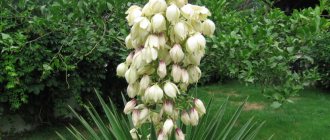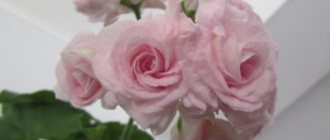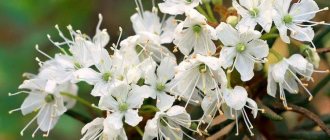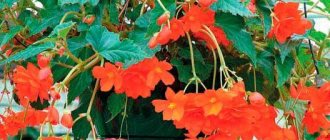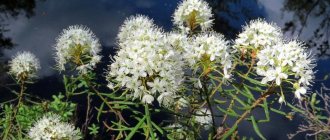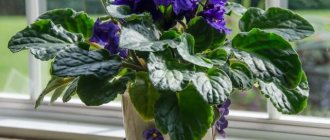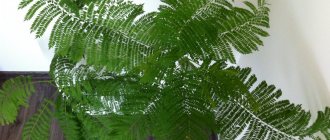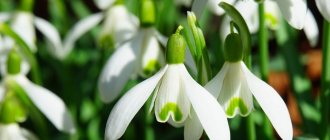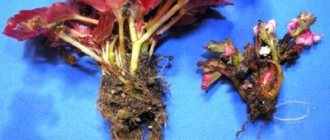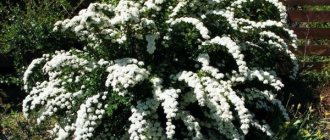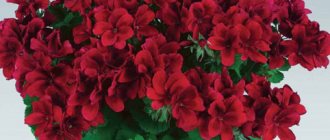The decorative deciduous perennial acalypha (Acalypha) is part of the Euphorbiaceae family. This flower has two forms: an ampelous plant and a shrub. It is native to New Guinea and Malaysia, where it is found in tropical forests. In nature, some varieties can reach a maximum height of about 200 cm. However, domestic akalifa, as a rule, has a maximum stem length of about 100 centimeters.
The shoots are characterized by increased flexibility, and they are decorated with oval or lanceolate leaf plates, and their color can be very different: from brownish-red to greenish. The cascading long spike-shaped inflorescences consist of small red-crimson flowers. If you provide the plant with optimal growth conditions and suitable care, then it will bloom all year round.
Akalifa is a fast-growing plant that is quite easy to care for. In order for the bush to look neat and bloom magnificently, we must not forget to promptly trim the flowers that have begun to fade.
Brief description of cultivation
- Temperature . In the warm season, the optimal air temperature for akalifa is around 23 degrees. And in winter it should be within 15 degrees.
- Air humidity . Requires high air humidity (minimum 50 percent). At the same time, you can moisten the bush with a sprayer only during the growing season (excluding flowering time).
- Illumination . The place should be well lit, the light diffused. In the shade, the foliage becomes faded, and when direct rays of the sun hit its surface, burns form.
- Watering . Moisten the substrate systematically. In summer - at least 2 times every 7 days, and in winter - immediately after the top layer of the soil mixture has dried.
- Substrate . It should allow water and air to pass through well, and also be nutritious. You can use ready-made soil mixture purchased at a specialty store. If desired, you can make it yourself: combine peat, sand, turf soil and humus.
- Fertilizer . During the growing season, Akalifu is watered with a nutrient solution twice or thrice a month. To prepare it, take a liquid mineral complex for house plants.
- Transplant . In spring or summer. In adult large bushes, instead of replanting, you can simply annually replace the top layer of substrate in the pot with a new soil mixture.
- Reproduction . In spring, by seed or apical cuttings.
- Trimming . To ensure that the bush is always neat and impressive, both sanitary and formative pruning is carried out every year: all stems are shortened by ½ of their length. Once every 3–5 years, anti-aging pruning is carried out: the bush is shortened to 20–30 centimeters.
AKALIFA or FOXTAIL | Care and breeding at home
Trimming
If the growing conditions “like” the flower, it will grow very quickly. Therefore, you need to learn how to prune this plant correctly. In addition, akalifa grows quickly in height and at the same time stretches too much, which reduces its decorative value.
To make the flower more lush and bushy, its shoots are pinched to the top 2 buds two or three times during the period of active growth.
You can use another trimming option. Every year at the end of February, you can radically prune the flower, leaving a stump up to 20 cm high from each shoot.
To stimulate the growth of green mass after such radical pruning, the plant is often sprayed and kept under a transparent film for about a month. You can also add Akalifa with a highly diluted growth stimulator.
Caring for Akalifa at home
Bloom
Indoor akalifa can bloom at any time of the year or even all year round. Spike-shaped fluffy inflorescences are collected from a large number of small red-crimson flowers. In some varieties, the length of the inflorescence can reach up to 50 centimeters.
In order for the plants to always look attractive, we must remember to promptly pick off the inflorescences that have begun to fade.
Temperature
Akalifa prefers to be warm. In the spring-summer period, the optimal air temperature is from 21 to 25 degrees, and in the cold season - from 12 to 16 degrees. If the room is too hot, this will lead to the shoots stretching and the plant losing its decorative properties. If the room has the minimum permissible air temperature, this may cause the growth of the bush to slow down and the development of various diseases. In addition, drafts pose a particular danger to akalifa. In this regard, under no circumstances should it be moved outside, even in the summer.
Air humidity
Since Akalifa is a tropical plant, it needs constant high air humidity. During the growing season, it is recommended to systematically spray the bush with a spray bottle. In this case, it is the air around the plant that needs to be humidified, and not its foliage. To do this, use well-settled, non-cold water. It is impossible to moisten the plant during the flowering period.
Illumination
This plant is distinguished by its high sensitivity to light, despite this, it requires mandatory protection from direct rays of the sun. The bush will feel best on a windowsill with an eastern or western orientation. It can also be placed on a south window, but in this case it will have to be additionally protected from direct rays of the sun. Akalifa cannot be grown in a shaded place, as this will cause its stems to become elongated and the leaves to become small and faded.
Watering
Watering should be systematic and moderate at any time of the year. Remember that you should not allow the earthen ball in the pot to dry out. It should be taken into account that on hot summer days the substrate in the pot dries out much faster. In the winter months, the frequency and abundance of watering should be slightly reduced.
Choosing a pot
The plant feels great in a pot where its root system is quite crowded. But at the same time, do not rush to purchase an excessively small pot for Akalifa, as this will only harm her. The root system should fit normally into the selected container and have a small amount of space for further growth.
soil mixture
This flower grows well in almost any soil mixture, as long as it is well-drained and light. An earth mixture consisting of leaf and turf soil, humus, peat and sand, which should be taken in equal parts, is best suited for its cultivation.
Top dressing
Akalifa must be fed from the first days of spring until mid-October. To do this, use a mineral complex, which is added to the soil mixture once every 15–20 days. The plant can also be regularly fed with organic matter. For example, you can use vermicompost.
Akalifa transplant
While the bush is young, it grows very quickly. In this regard, it needs regular transplants into larger pots, which are carried out once a year. It is recommended to replant adult specimens no more than once every 3 or 4 years. In this case, old large bushes, if necessary, are transplanted by transferring them into a larger container, or simply systematically replace their top layer of soil mixture with a new substrate.
Trimming
In order for the bush to always be neat and impressive, formative pruning should be carried out annually in spring. To do this, cut off all the stems, leaving ½ of their length (a little less is possible). If necessary, the plant can be rejuvenated; to do this, all its shoots are shortened to 0.2–0.3 meters. In order for young shoots to appear on the stumps as soon as possible, it is recommended to treat them with a Zircon solution.
Rest period
Akalifa growing indoors develops normally even without a full dormant period. A decrease in daylight hours can signal to the bush that it is time to rest. Such a mild dormant period does not last long, and it will require stopping the application of fertilizing, as well as reducing the frequency of watering.
Transplanting a plant
Young Akalifas are replanted every year, while adult specimens are replanted every 3 or 4 years; if Akalifa has lost its decorative effect, then it is necessary to renew it by rooting cuttings.
The soil mixture for growing Foxtail should be light and permeable to air and water. Composition: turf, leaf soil, sand, high peat, taken in equal proportions. But in different sources of substrate information, the ratio of parts fluctuates in these ranges: 4 parts turf soil, 2 parts greenhouse soil, 1 part leaf soil, and acidic high peat or 0.5 sand and one part each leaf soil and sand.
Reproduction methods
Growing from seeds
Homemade akalifa can be grown from seeds. To do this, they are sown in a light and loose substrate consisting of sand and leaf soil. For the rapid emergence of seedlings, crops must be provided with an optimal temperature for growth: from 20 to 22 degrees. To maintain the required temperature and humidity, it is recommended to place the crops in a mini-greenhouse. In this case, seedlings will appear much faster.
After the plants reach a height of 20 to 30 mm, they are planted in individual cups. Then they are cared for in the same way as adult akaliphs.
Cuttings
Any type of akalifa can be propagated by cuttings. However, there is one important rule: acalypha bristly-hairy can be propagated in this way only in spring, and variegated varieties can be propagated throughout the year. For rooting, the cuttings are placed in a mini-greenhouse, and they are planted in a loose mixture of sand and peat.
Before planting for rooting, it is recommended to treat the lower part of the cutting with a product that stimulates root growth. The cutting quickly takes root and begins its intensive growth. After 6 weeks after planting the cuttings, you should pinch their upper parts so that the bushes grow more luxuriant.
Akalifa cuttings and dividing the bush.
Possible problems
Indoor akalifa is distinguished by its undemanding care and growing conditions, as well as its endurance. But if the bush is in unsuitable conditions or is not provided with proper care, this can lead to various problems or the appearance of pests.
Common problems:
- Yellowing and flying of leaves . The bush feels an acute lack of moisture, so you should immediately adjust the watering regime. If nothing is done, this will have an extremely negative impact on the appearance of the plant.
- Leaf blades wither and die . Most likely, the room is very cold. To correct the situation, move the flower to a place where the air temperature will be optimal for it.
- The foliage becomes faded . This indicates that the substrate has too little nitrogen. Fertilize with the necessary fertilizer.
- Slow bush growth . This problem is associated with a lack of nutrients in the soil mixture. It can be solved by systematically adding fertilizer to the substrate.
- Brown spots on foliage . This suggests that Akalifa is sick with a fungal disease. To save it, you should treat it with a fungicide.
Most often, the following pests settle on such a plant: scale insects, mealybugs, aphids and thrips. To get rid of these pests, spray the bush with an insecticide solution.
Her best enemy
Akalifa suffers from spider mites, whiteflies, aphids and scale insects.
| Pests | Manifestations | Struggle | Prevention |
| Whitefly | • Leaves wilt. • Greenish larvae on the bottom of the leaf blade | Treat with an insecticide (kinmix) twice a week until the whiteflies disappear | Inspect the plant and use insecticides for preventive purposes |
| Shields | • Yellowed leaves have a sticky coating. • Brown plaques | • Wipe the leaves with cotton wool and alcohol, removing pests. • Treat the plant with an insecticide (fitoverm, fufanon) | • Wash short plants in the shower. • Clean Wilks' leaves with a damp sponge. |
| Spider mite | • The leaf blade is covered with yellow spots and looks dusty. • There is a thin cobweb under the leaf | • Give the bush a shower. • Treat with acaricide (actellik). • Humidify the air around the plant | • Spray. • Wash compact plants in the shower |
| Aphid | • Leaves are curled. • Shoots are deformed | • Wash off the aphids with warm water and soap. • Treat with insecticide | Spray with insecticide for preventive purposes |
Types of Akalifa
Acalypha wilkesiana
This variety was obtained artificially by breeders. The plant has straight stems that become woody over time. They contain large simple leaf plates shaped like a heart or an oval. Spike-shaped inflorescences consist of small reddish-crimson flowers. This akalifa differs from the others in its unusual foliage color, which can vary from speckled brown to greenish.
The variety has 2 forms:
- Godsefa (Godseffiana) . On the surface of the dark green leaf blades there is strong pubescence, and along the edge there is a golden border.
- Mosaic (Musaica) . Large brownish-red leaf blades are decorated with small spots of dark color.
Acalypha hispida
Akalifa bristle-haired, or Akalifa bristly, or red cat's tail.
The species is represented by shrubs. Its foliage is rich green, and its spike-shaped inflorescences can reach about 50 centimeters in length. This type of kalifa is the most popular among flower growers.
Haitian acalypha or cat's tail (Acalypha hispaniolae)
This hanging plant has thin flexible stems reaching approximately 0.3 meters in length. The dark green oval leaf blades have a serrated edge. Red flowers are part of short fluffy spike-shaped inflorescences.
The benefits and harms of Akalifa
Benefit
If you want to improve the environmental situation in the room and apartment as a whole, then you should pay attention to Akalifa. It can normalize electrostatics, as well as clean the air from pathogenic microorganisms and fungi. In addition, the akalifa bush helps to stabilize the positive energy in the room, and it also has the ability to have a calming effect on the person in the room.
Mr. Summer resident explains: poison or medicine?
Astrologers and people who follow the teachings of Feng Shui find this plant very useful, noting that akalifa has a good effect on the cardiovascular system.
In addition, the flower fills the house with positive energy, improving the mood of its owners. Previously, it was fashionable to give a flower to a partner or life partner, because it added strength of spirit to a person.
Despite the fact that akalifa looks like nettle, it will be an excellent decoration for the interior, and it can also be used for landscaping a summer cottage.
The main thing is to carefully care for the plant and wear rubber gloves when removing weeds, as there is a possibility of toxic juice getting on the skin and causing allergies.
